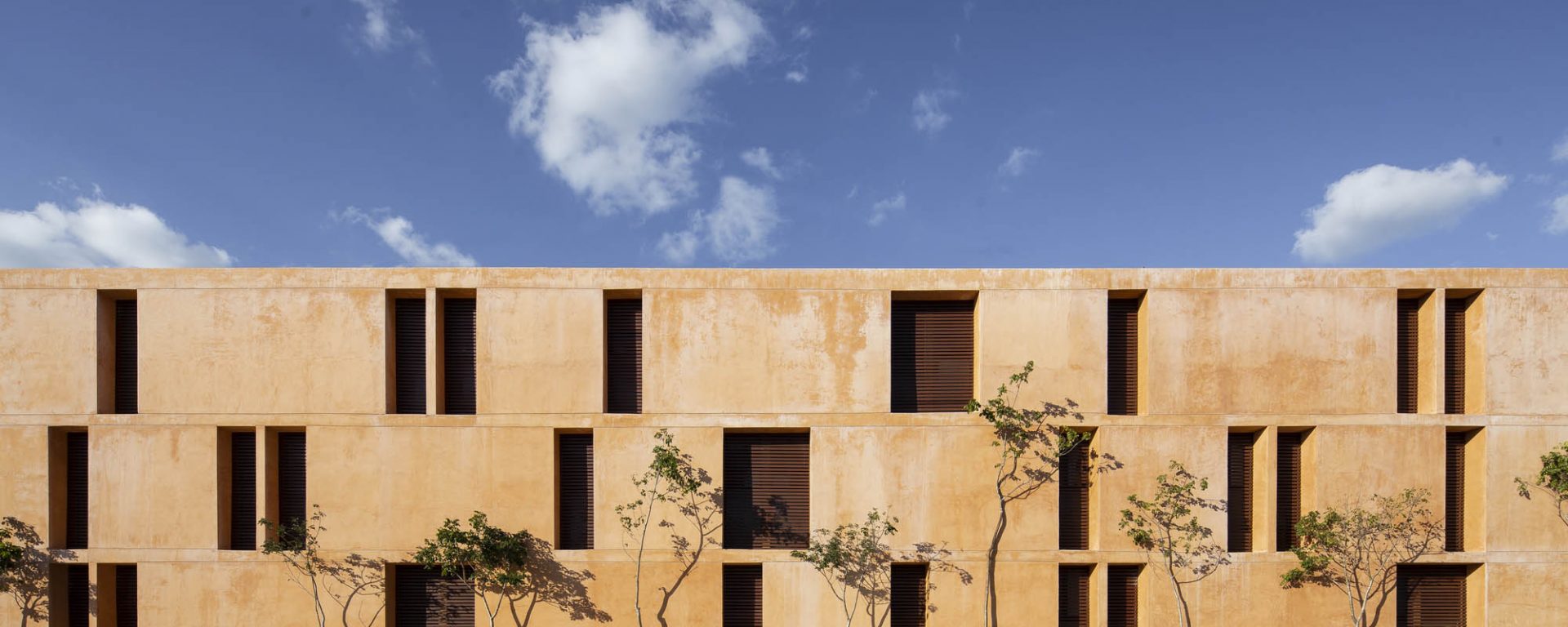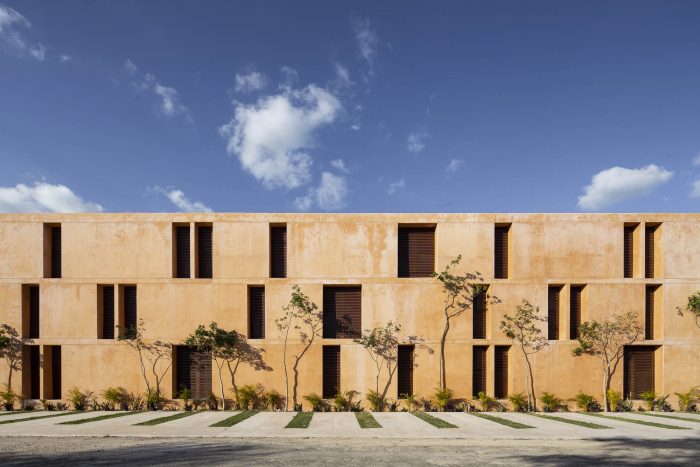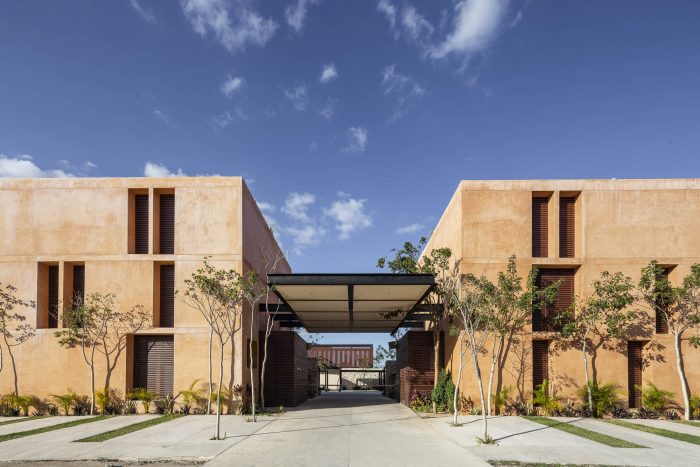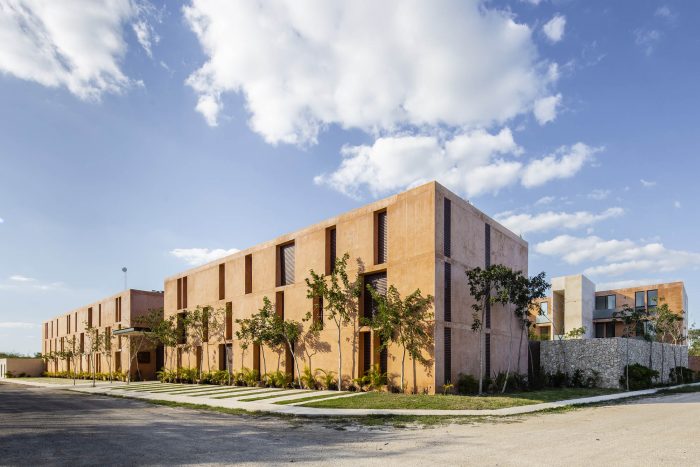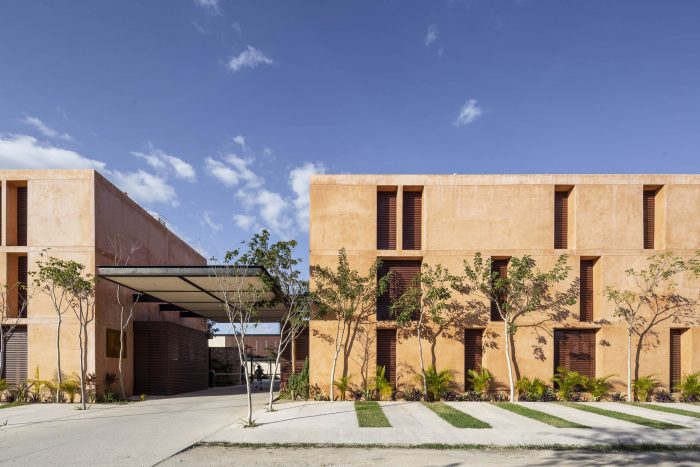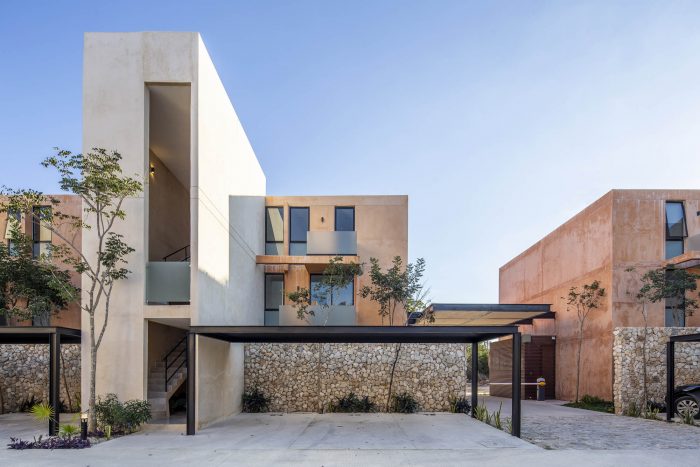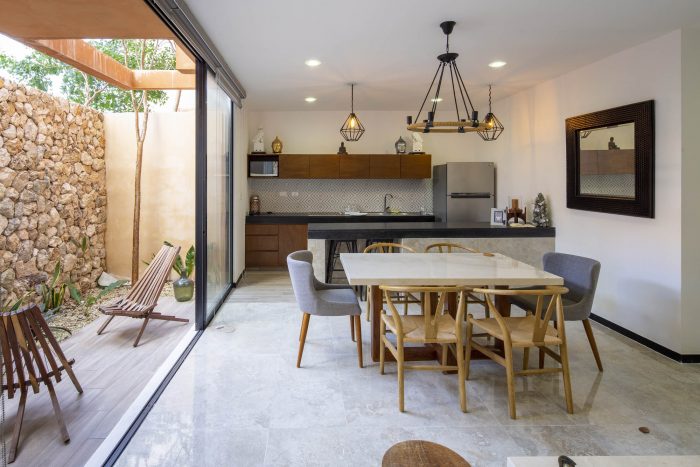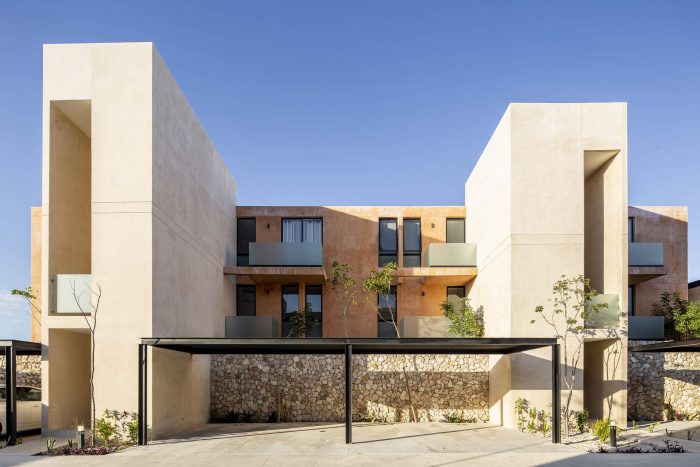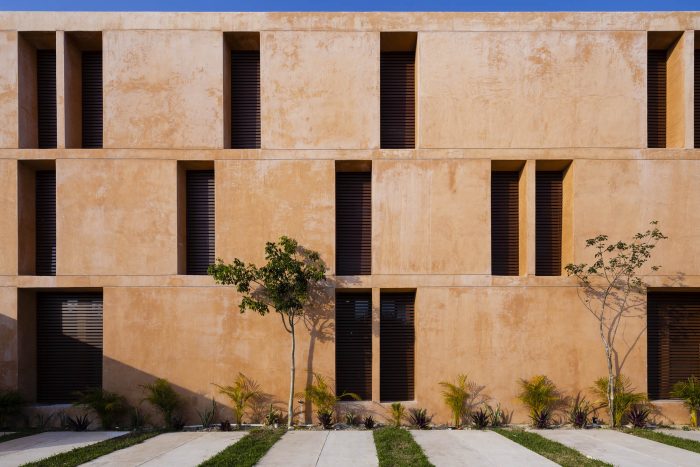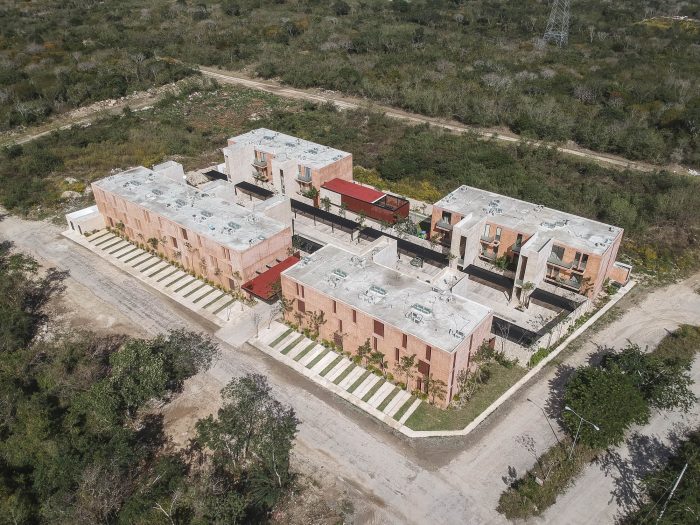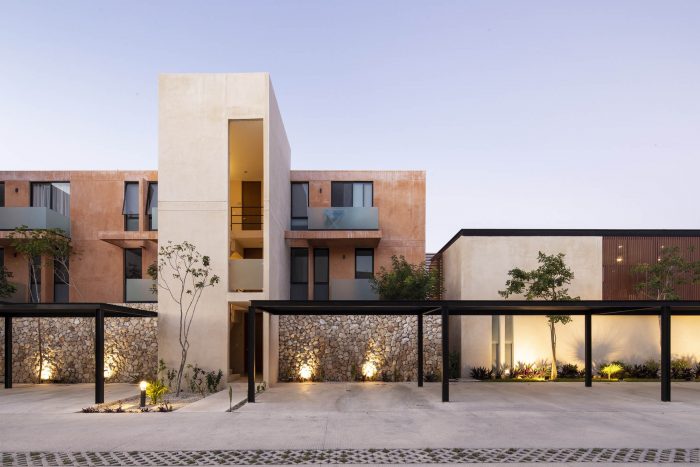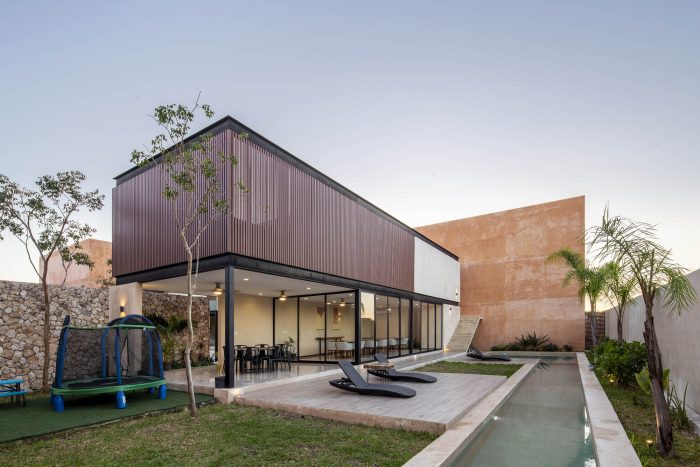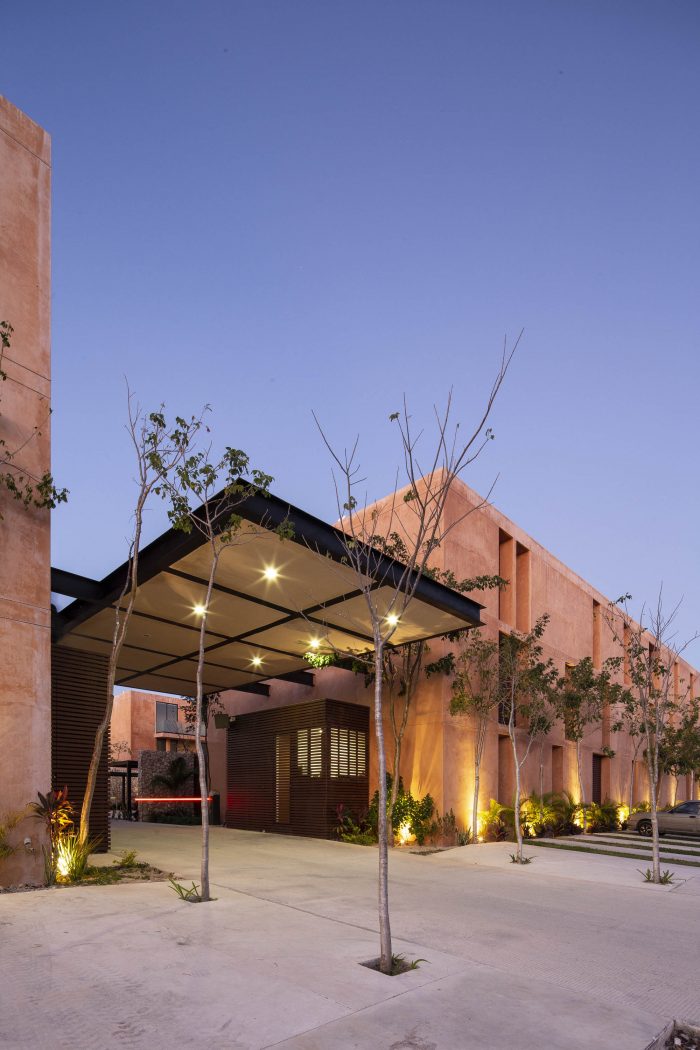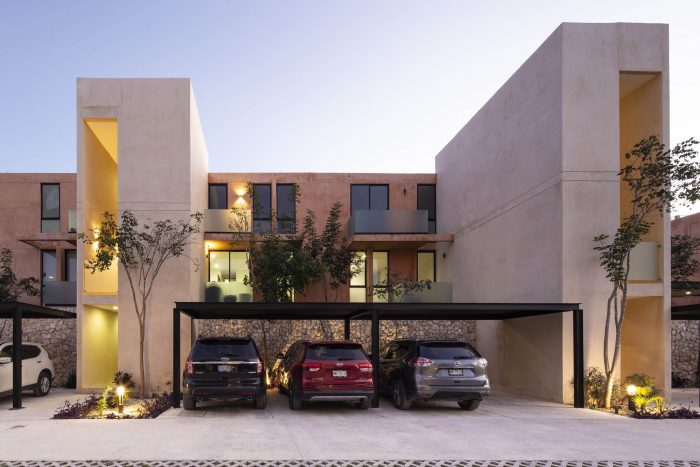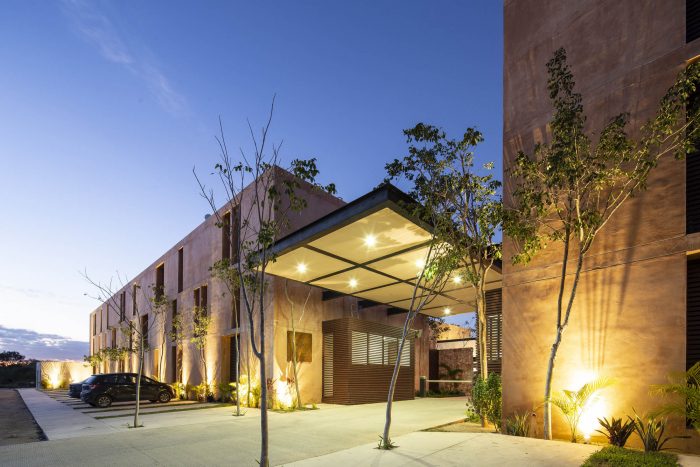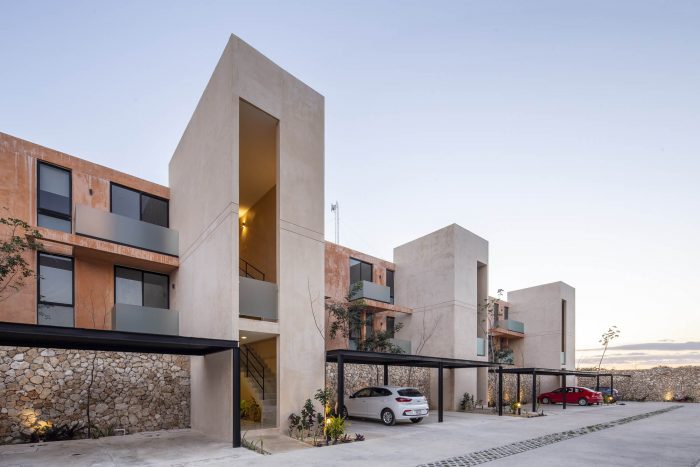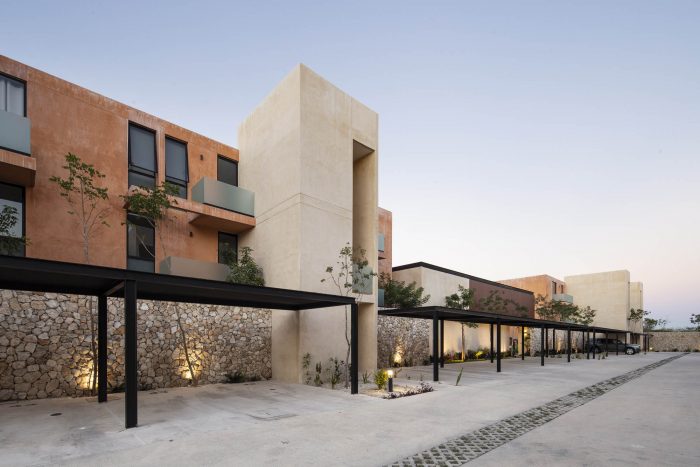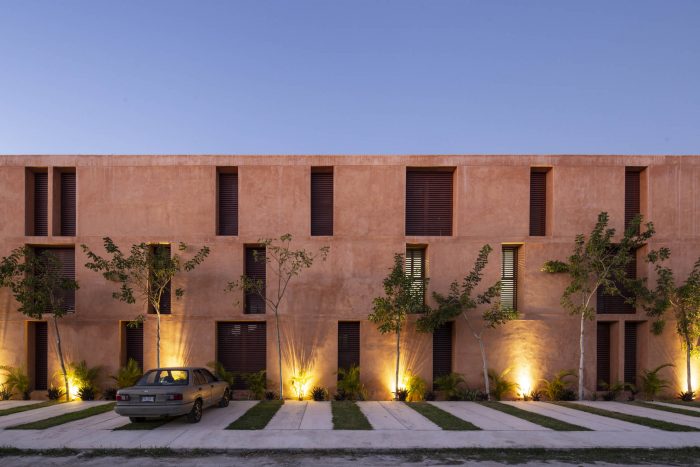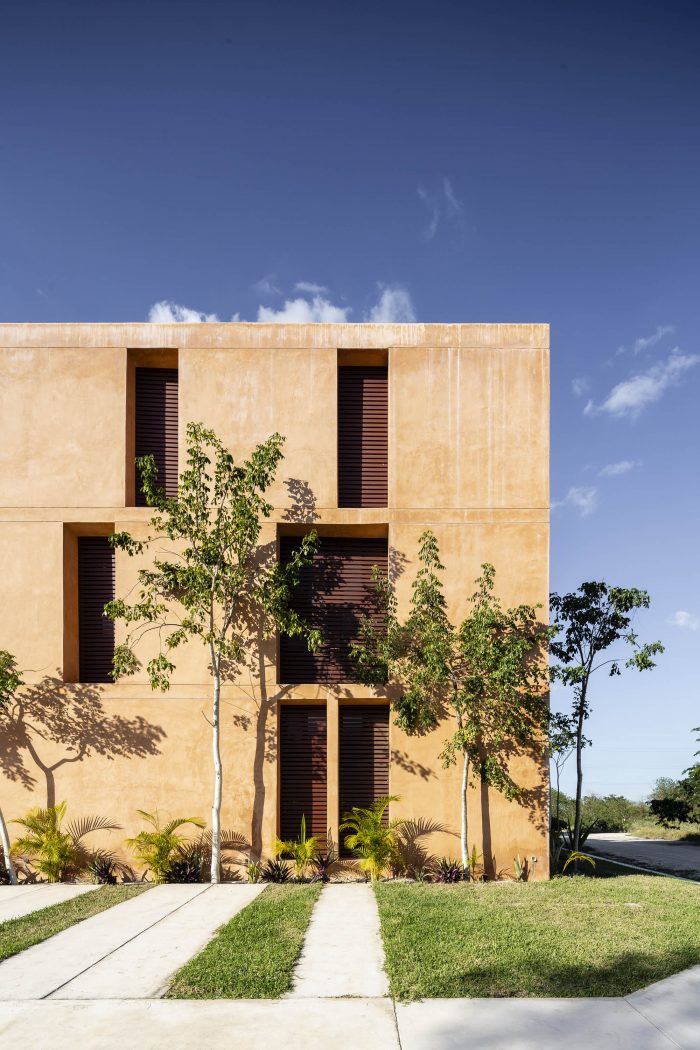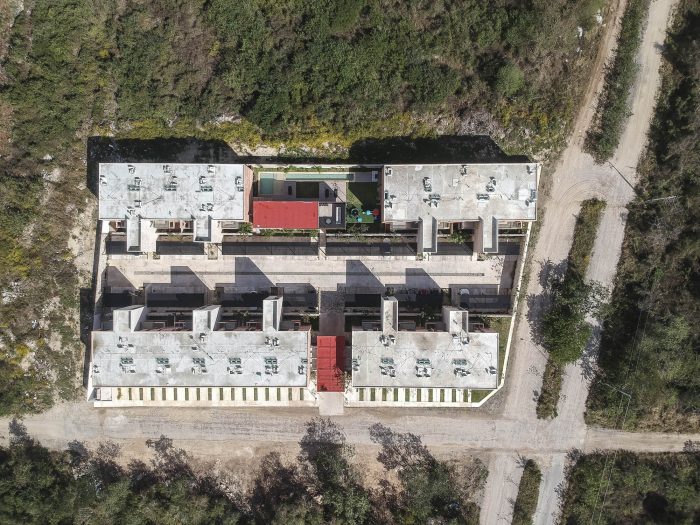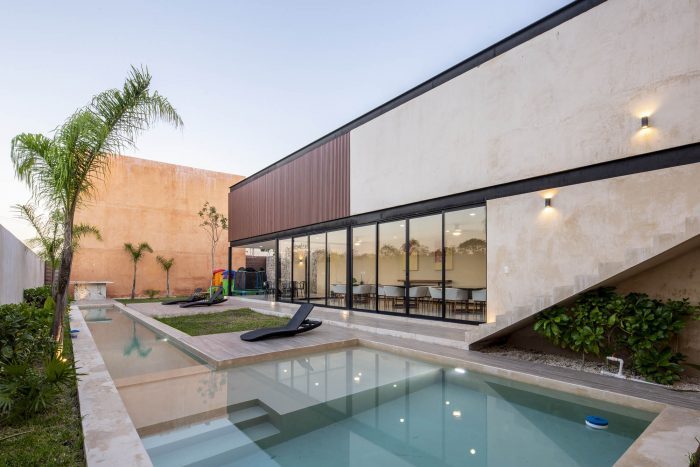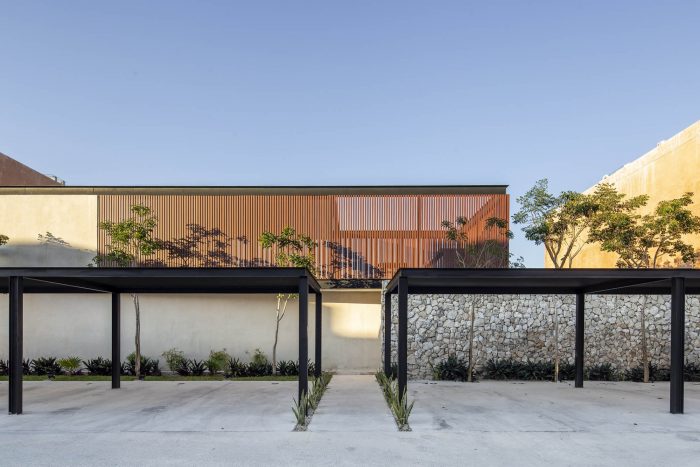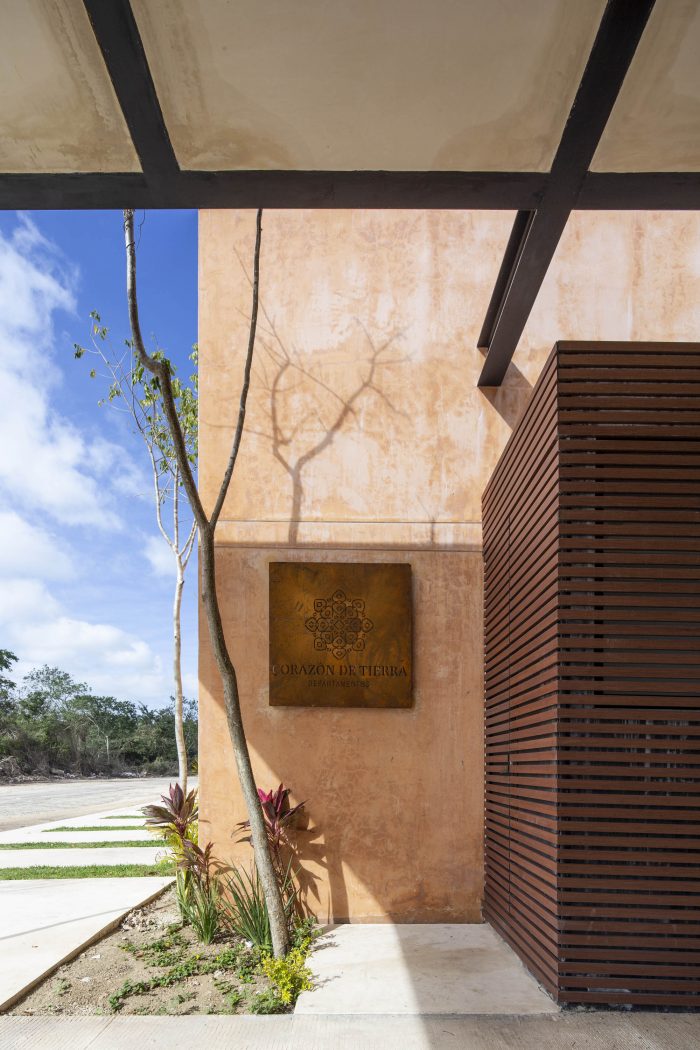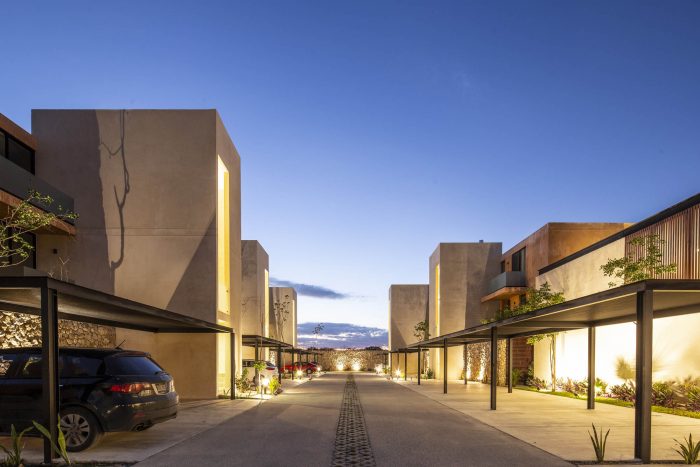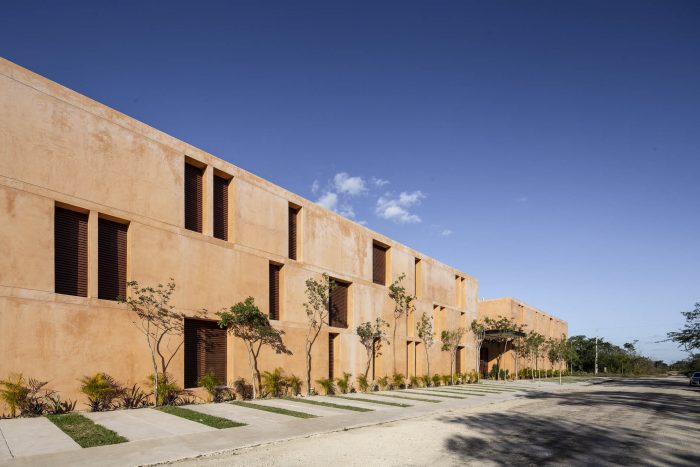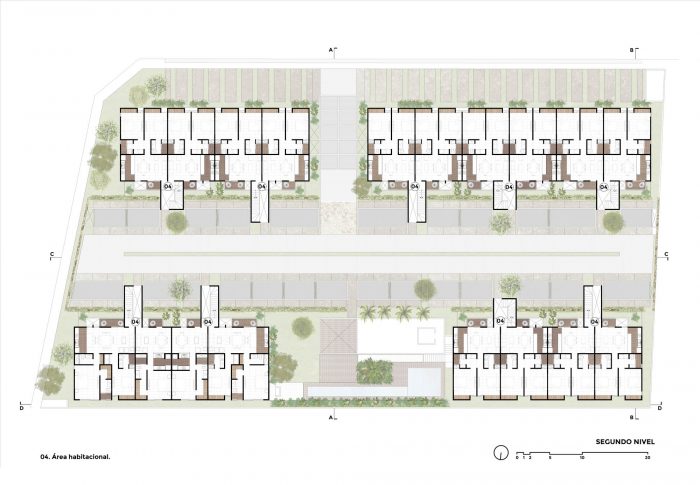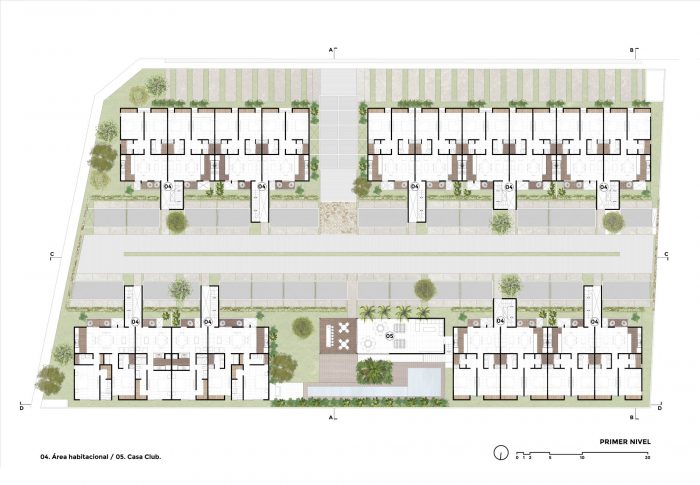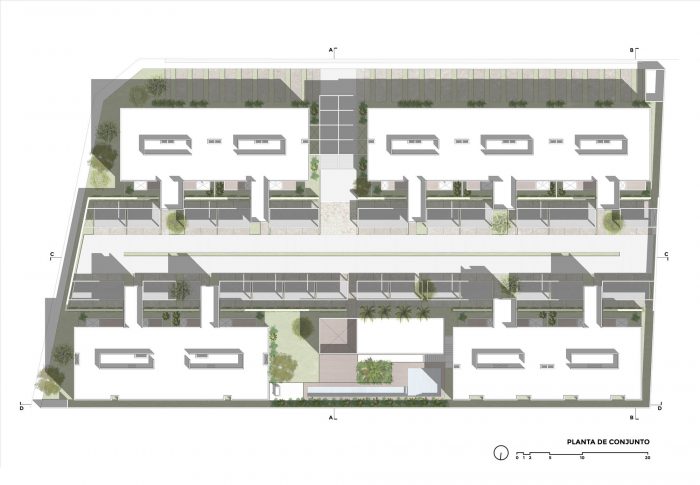Corazón de Tierra是一个由54个住房单元组成的多家庭综合体。该项目源于该州对住房的巨大需求和当前的需要。该项目位于尤卡坦州梅里达市北部,在一个长方形的角落里,朝南朝北,面积为4700平方米。
Corazón de Tierra is a multi-family complex consisting of 54 housing units. The project originates due to the great demand and current need for housing in the state. The site is located north of the city of Mérida in the state of Yucatán, on a rectangular-shaped corner lot facing south-north, with a surface of 4,700 m2.
这个想法来自于将一个大的体量分割成小的部分,从而产生了四个不同的元素,在这四个元素中发展了住房计划。在这些体量之间的 “裂缝 “中,产生了综合体的通道、中央循环和社会区域。这样一来,就出现了两条构成轴线,横向的一条框住了通道,它通向中央空间,并以社会区域为终点。纵向的轴线以当地石材建造的墙为界,贯穿整个中央空间,使其与外部的外立面形成视觉上的联系,成为一种连接元素。
The idea was born from the fragmentation of a large volume into smaller pieces, resulting in four different elements in which the housing program is developed. The access, the central circulation and the social area of the complex are generated in the “cracks” created between these volumes. In this way, two compositional axes emerge, the transversal one that frames the access, which leads to the central space and ends with the social area. The longitudinal is delimited by a wall built with local stone, running through the central space in its entirety, allowing a visual connection with the exterior facades as a linking element.
通过体量之间出现的裂缝,我们捕捉到了来自北方和东方的微风,目的是利用该地区的盛行风。所有的空间都是南北朝向,以获得更大的气候舒适度,这对于像梅里达市这样炎热的地方来说是必要的。
Through the cracks that emerge between the volumes, we capture the breezes coming from the north and east, with the intention of taking advantage of the prevailing winds of the region. All spaces are oriented north-south for greater climatic comfort, necessary in places as hot as the city of Mérida.
外墙的空隙和质量提供了一个光和阴影的效果,在一天中变化,使建筑的节奏,运动和特点。
The voids and masses of the facades offer an effect of lights and shadows that change throughout the day, giving the building rhythm, movement and character.
我们使用当地的材料,如Chukum和石材,使建筑群具有自己的特色,并由于其高耐久性和低维护性。在住宅建筑中,我们建议使用红土(kancab)和天然红土的混合材料。同样,板石(场地挖掘的产物)被用来强调空间上连接建筑群主要流通区域的体积。
We use materials from the region such as chukum and stone, to give the complex its own identity, and due to its high durability and low maintenance properties. For the residential buildings, a mixture of chukum with red clay (kancab) is proposed and in the public spaces, natural chukum. Similarly, slab stone (a product of the excavation of the site) is used to emphasize the volume that spatially joins the main circulation area of the complex.
建筑师:P11 Arquitectos
面积:5780 m²
年份:2021年
摄影:Eduardo Calvo Santisbón
制造商:AutoCAD, Boxito, Elemetic
主设计师:Arturo Carrillo Ponce
合作者:Alfonso Rosado, Rocío Suarez, Manuel Tello, Elsy Uribe, Aide Chi, Alejandra Toledo
城市:Chablekal
国家:墨西哥
Architects: P11 Arquitectos
Area: 5780 m²
Year: 2021
Photographs: Eduardo Calvo Santisbón
Manufacturers: AutoCAD, Boxito, Elemetic
Lead Architect:Arturo Carrillo Ponce
Collaborators:Alfonso Rosado, Rocío Suarez, Manuel Tello, Elsy Uribe, Aide Chi, Alejandra Toledo
City:Chablekal
Country:Mexico

